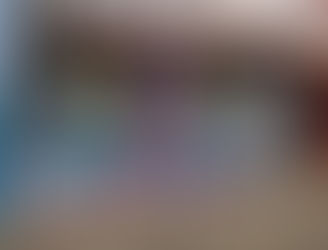2 Weeks of Woofing
- asiaquentin
- 20 nov. 2017
- 4 min de lecture


After 14 hours on the bus, comfortably seated in grandpa's-like arrmchairs (standard Salon Cama) and for about 22000 pesos (a bit less than 30 €) we've found ourselfs further down south (at least 1000km from Santiago) in Puerto Montt .
But to reach our final destination, our Woofing spot, we had to take a mini bus as well for 1 hour (and 1800 pesos) and finally a boat (300 pesos) ^^ Yup, it's a little adventure to get there.

The mini buses (blue for most of the time) have a capacity of about 15 seats, but there' always a way to pack up much more people, if you know what I mean;) Due payment, displayed in almost all of the buses, differs depending on where you hop on and off (the bus can stop praticaly everywere on it's way, not only on the official stops). So one pay just before getting off the bus and the amount depends on the distance.
Unfortunately for the passengers, bus schedules remain a mystery: one have to go to the bus stop and just wait patiently.

So, woofing / volunteering! We spent nearly 2 weeks in a small farm near Calbuco (the town and not the volcano, which aren't close one to another at all), in the place called Rosario. The house was located just by the ocean (by a small bay) where one can observe dolphins, seals and penguins. Pretty cool place!
At this point it may be useful to explain what Woofing is and how it works: It's a kind of volunteering, where the labour is exchanged against housing and food. The requested help is generally of 5 hours per day and 5 days per week (but it can vary, as in our perticular case). There are 3 "assotiations" for the "woofing":
Workaway https://www.workaway.info/
Woofing http://wwoofinternational.org/
HelpX http://www.helpx.net/
At the beginig the woofing only concerned organic farms, but later the movement has spread to other types of farming and buisneses (like hostels, bars? etc). The idea is really simple and it is one of the best ways to visit a country: you share the lives of people and you save money while giving a hand! One changes from beeing a tourist (a person who "observes another culture") to a traveler (who "shares the life of another culture").

Our work was mainly about preparing the soil and planting salad and spinach.

We are a bit divided on our Woofing experience. The cons are that the wokingdays were long (7 to 8 hours to enjoy all the meals). So afterwards we were a little too slammed during the evenings to chat with the family or to go for a walk. My previous experiences (Quentin) had me used to a little less hours: 5hr being the average. And for me (Asia), for whom this was the first experience of this type, I can only say that I've never work so much for such a little pay (counting the internships during my university years). The other negative point was that the girl, who normally takes care of showing around the volunteers, was heavily pregnant (and gave birth to a daughter just before we left), so we couldn't count on a local guide.That was the two rather negative points ...

El Patron, who doesn't like photo camera.
Otherwise it was a rewarding experience! We were able to practice our Spanish skills intensively, chilean slang included, which was perfect, especially regarding the fact that our trip just begins,. Tutoring in slang, is really useful to understand chilean version of Spanish, like for example the word “WEON” and it's magical use: it can mean almost everything: this guy, this thing, damn, of phew .... in the positive as well as in the negative meaning ^^ The interactions with the familly taught us a lot cause we were able to discuss a lot of different subjects and learn a little more about the region and the life there.
We had plenty of plates too full of local dishes: salmon, poroto con Riendas, seafood (even big raw clams with lemon - not too my thing (Quentin))

It was also good to spend few days outdoors (even if we haven't been spoiled by the weather: in the Los Lagos area they have not seen such a rainy spring for years) and do some physical labour! Financially it was of course interesting as well, since we've spent nothing during 2 weeks (and Chile is expensive - almost as much as France, except public transport). So at the end of the day, this won't be the last experiance of this kind (spoiler: at the end of November we will do it again).

Eagle-like birdy, who spent most of the time with us hunting for snails.

The path from the hous to our wokrplace.
The surroundings of Rosario and Calbuco.

The region lives mainly from the sea (fishing industry and a little bit of tourism). There's a multitude of boats in and around the harbor. This aren't the big companies and big trawlers, but rather independent fishermans, who are useing wooden boats built directly on the beach.

In the back ground one can see a volcano. An active volcano.

The mini-fort, represented on the town's emblem as well.

As one can notice, the election campaign was on at that moment.


The village is rather pretty, but to visit it, one afternoon is enough. Afterwards, one can go to many of neighboring islands for a hike.

Oh and we ate delicious empanadas with cheese, shrimps and crabs on the big Sunday market(la feria) ... but as we found out later, not fresh enough ... one of the empanadas was returned to the sea few hours later, the other made his effect a few days later, if you're interested in such stories....^^




















Commentaires